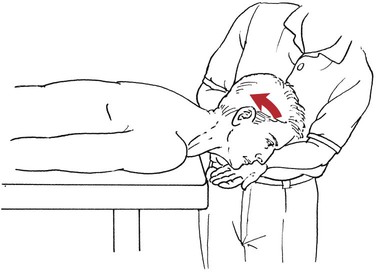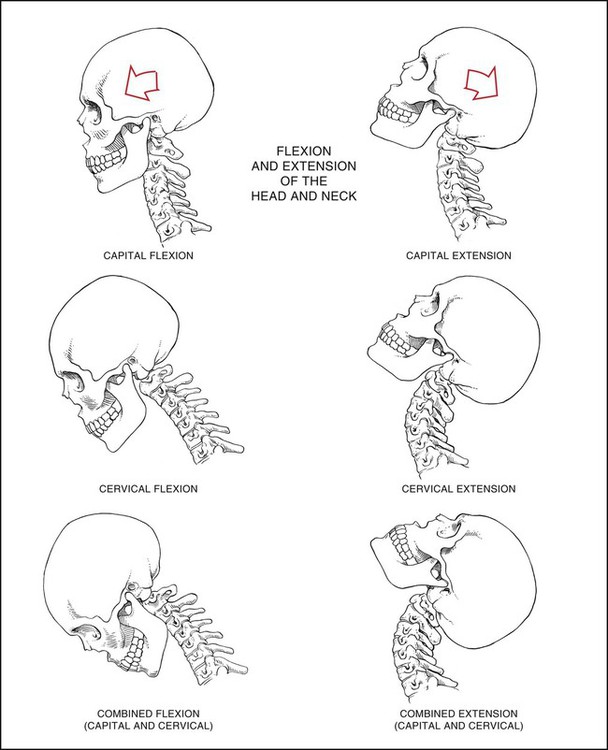Note: This section of the book on testing the neck muscles is divided into tests for capital and cervical extension and flexion and their combination. This distinction was first described by Perry and Nickel as a necessary and effective way of managing nuchal weakness or paralysis.1 All muscles acting on the head are inserted on the skull. Those muscles that lie behind the coronal midline are termed capital extensors. Motion is centered at the atlanto-occipital and atlantoaxial joints.2,3 Table 3-1 Standing at side of patient next to the head. One hand provides resistance over the occiput (Figure 3-3). The other hand is placed beneath the overhanging head, prepared to support the head should it give way with resistance, which is applied directly opposite to the movement of the head. Standing at end of table facing patient. Head is supported with two hands under the occiput. Fingers should be placed just at the base of the occiput lateral to the vertebral column to attempt to palpate the capital extensors (Figure 3-5). Head may be slightly lifted off table to reduce friction. Table 3-2 The cervical extensor muscles are limited to those that act only on the cervical spine with motion centered in the lower cervical spine.2,3 This test should be used if there is known or suspected trunk extensor weakness. The therapist should always have an assistant participate to provide protective guarding under the patient’s forehead. This test is identical to the preceding Grade 3 test except that stabilization is provided by the therapist if needed to accommodate trunk weakness. Stabilization is provided to the upper back by the forearm placed over the upper back with the hand cupped over the shoulder (Figure 3-10).
Testing the Muscles of the Neck
Capital Extension
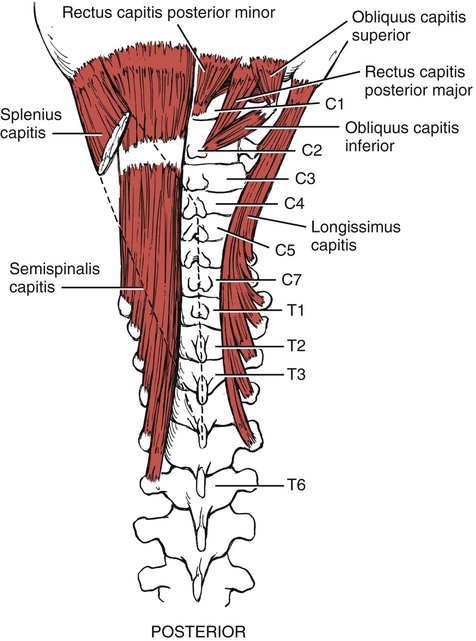
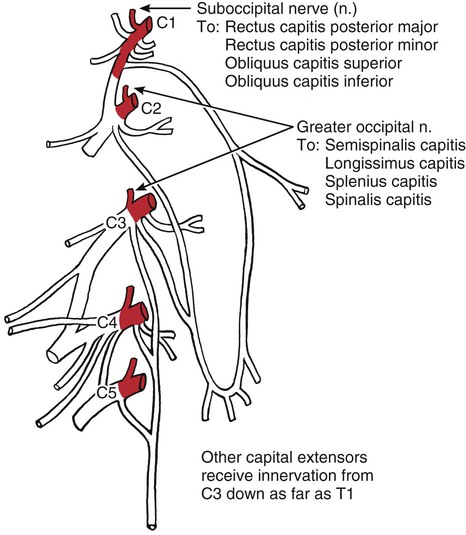
I.D.
Muscle
Origin
Insertion
56
Rectus capitis posterior major
Axis (spinous process)
Occiput (inferior nuchal line laterally)
57
Rectus capitis posterior minor
Atlas (tubercle of posterior arch)
Occiput (inferior nuchal line medially)
60
Longissimus capitis
T1-T5 vertebrae (transverse processes)
C4-C7 vertebrae (articular processes)
Temporal bone (mastoid process, posterior surface)
58
Obliquus capitis superior
Atlas (transverse process)
Occiput (between superior and inferior nuchal lines)
59
Obliquus capitis inferior
Axis (lamina and spinous process)
Atlas (transverse process, inferior-posterior surface)
61
Splenius capitis
Ligamentum nuchae
C7-T4 vertebrae (spinous processes)
Temporal bone (mastoid process)
Occiput (below superior nuchal line)
62
Semispinalis capitis (distinct medial part often named Spinalis capitis)
C7-T6 vertebrae (transverse processes)
C4-C6 vertebrae (articular processes)
Occiput (between superior and inferior nuchal lines)
124
Trapezius (upper)
Occiput (external protuberance and superior nuchal line, middle 1/3)
C7 (spinous process)
Ligamentum nuchae
Clavicle (posterior border of lateral 1/3)
63
Spinalis capitis
Medial part of Semispinalis capitis, usually blended inseparably
Occiput (between superior and inferior nuchal lines)
Other
83
Sternocleidomastoid (posterior)
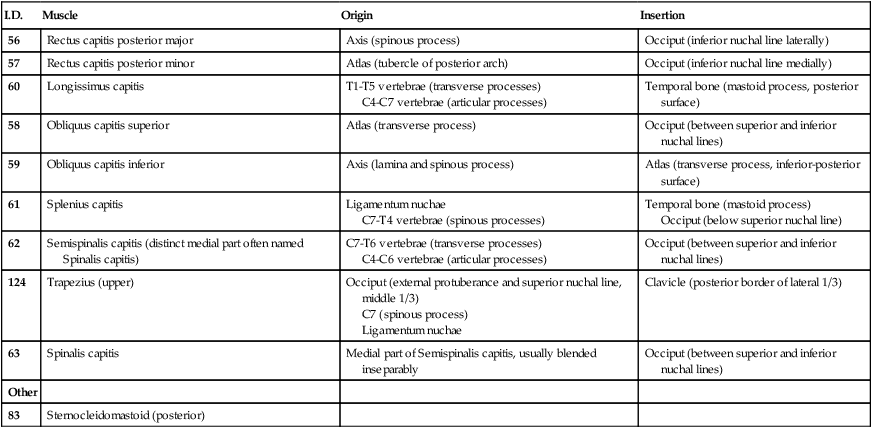
Grade 5 (Normal) and Grade 4 (Good)
Position of Therapist:
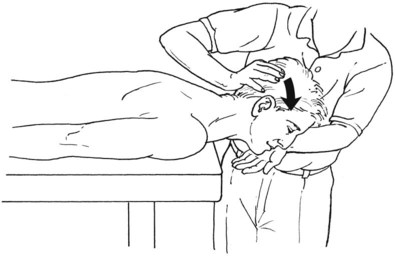
Grade 2 (Poor), Grade 1 (Trace), and Grade 0 (Zero)
Position of Therapist:
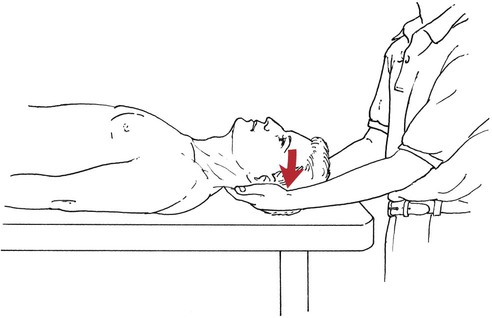
Cervical Extension
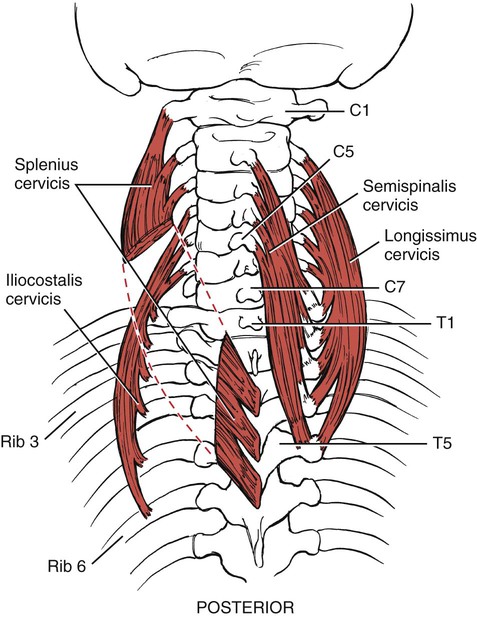
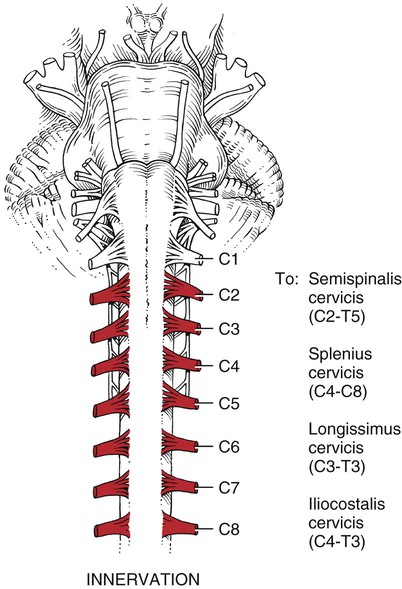
I.D.
Muscle
Origin
Insertion
64
Longissimus cervicis
T1-T5 vertebrae (transverse processes) variable
C2-C6 vertebrae (transverse processes)
65
Semispinalis cervicis
T1-T5 vertebrae (transverse processes)
Axis (C2)-C5 vertebrae (spinous processes)
66
Iliocostalis cervicis
Ribs 3-6 (angles)
C4-C6 vertebrae (transverse processes, posterior tubercles)
67
Splenius cervicis (may be absent or variable)
T3-T6 vertebrae (spinous processes)
C1-C3 vertebrae (transverse processes)
124
Trapezius (upper)
Occiput (protuberance and superior nuchal line, middle 1/3)
C7 (spinous process)
Ligamentum nuchae T1-T12 vertebrae occasionally
Clavicle (posterior border of lateral 1/3)
68
Spinalis cervicis (often absent)
C7 and often C6 vertebrae (spinous processes)
Ligamentum nuchae
T1-T2 vertebrae occasionally
Axis (spinous process)
C2-C3 vertebrae (spinous processes)
Others
69
Interspinales cervicis
70
Intertransversarii cervicis
71
Rotatores cervicis
94
Multifidi
127
Levator scapulae
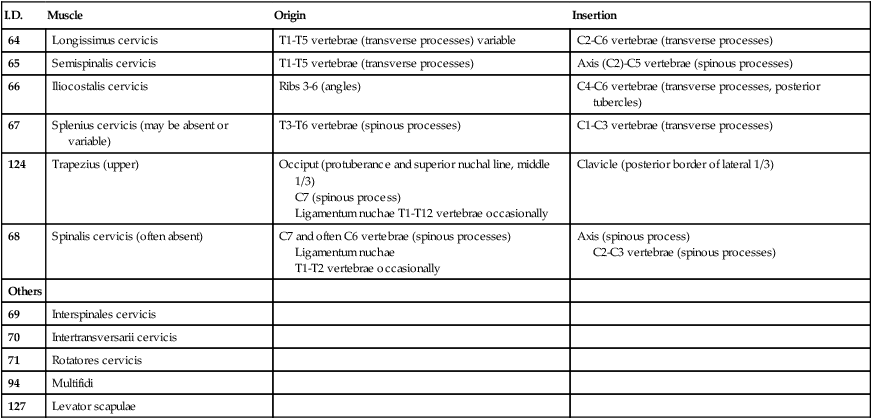
Grade 3 (Fair)
Grading
Alternate Test for Grade 3:
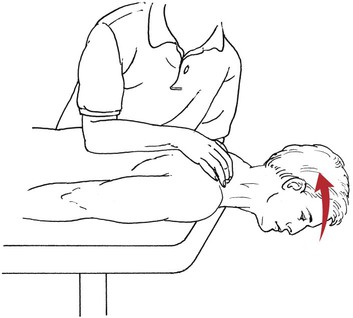
Musculoskeletal Key
Fastest Musculoskeletal Insight Engine

